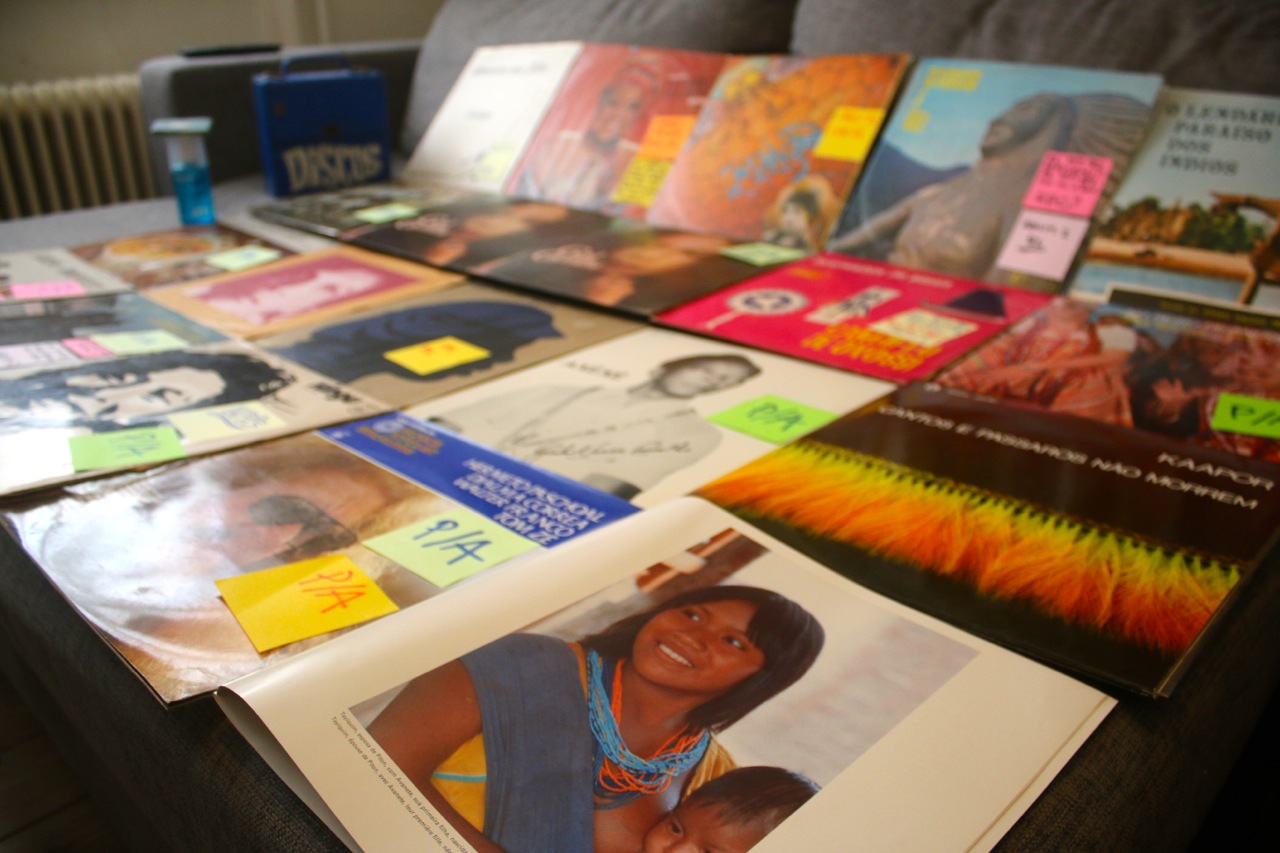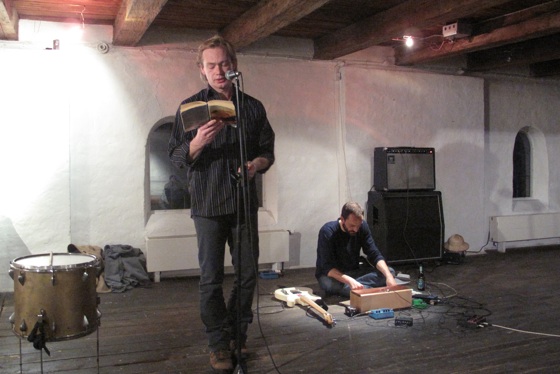Epic Vinyls from Brazil – PAB-1 (mixtape)
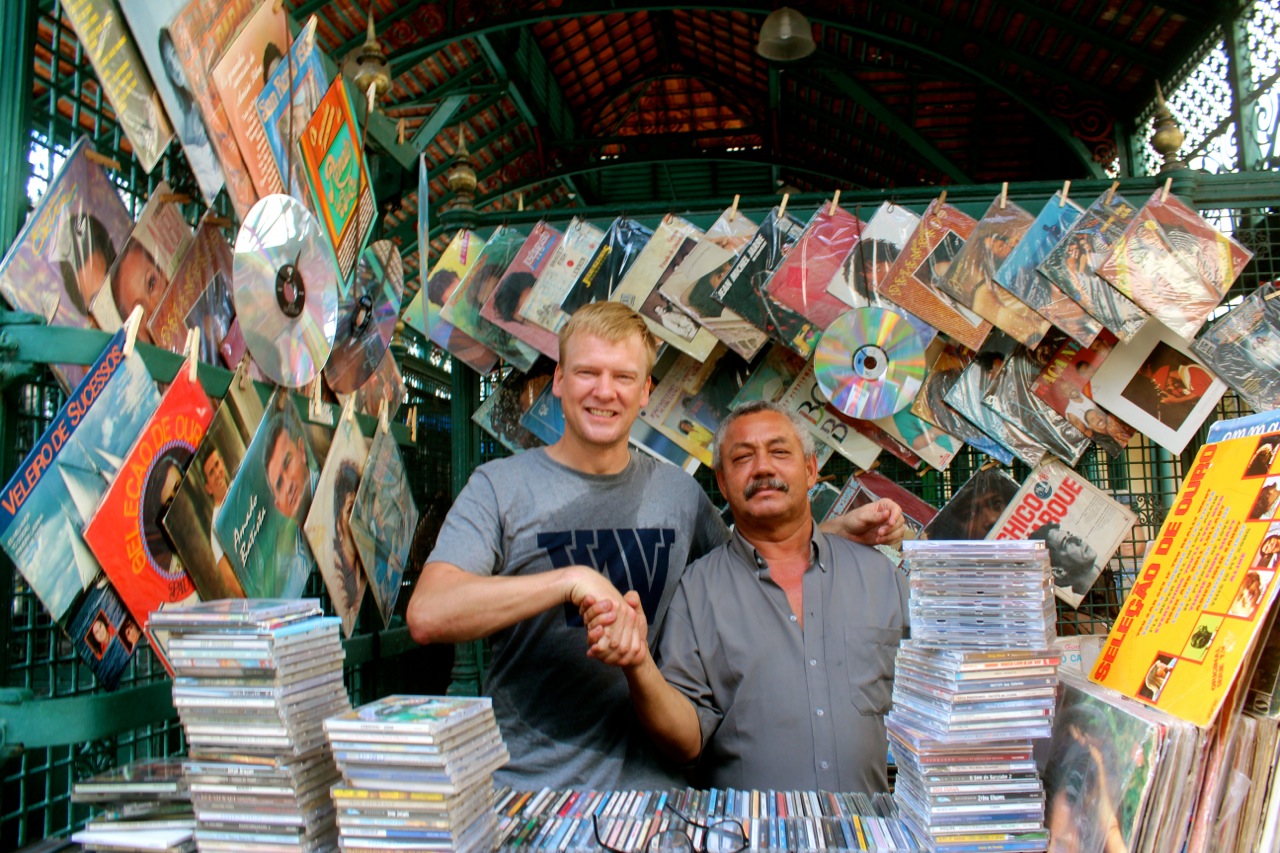
Mixtape and liner notes by Rasmus Schack / Epic Vinyls from Brazil.
When you live in Brazil as a foreigner, you come to a certain point where you have to ask yourself; what happened to the native population? And where are they?
And as a DJ/researcher you wonder if there exists an influence on the Brazilian music. My first meeting with native Brazilians was in a hectic environment in the eviction-targeted old Indian Museum next to Maracanã Stadium in Rio and then on a Sunday street market in Porto Alegre, Brazil’s southernmost state capital where I bought jewelery and figurines off a small group that hardly spoke Portuguese.
And then suddenly, a day in November 2014 at a street vendor’s stall in Recife, Pernambuco, before my eyes appeared an album entitled “Xingú”. Now “Xingú” is one of the most known tribes/areas in Brazil for those who take interest in the native population, due to the Xingú river and the feature movie of the same name, but I’d never seen that album before and had to get it. I’d never seen an album dedicated to native Brazilian culture. Only some minor bits and pieces on the bird recordings from the Amazon that I collect. Unfortunately, the street vendor saw the spark in my eyes and pushed me to pay far more than I would ever pay in a street stall. I still don’t regret it now. The Xingú album has some amazing and dreamlike chants and vocal pieces – and was even published on the Philips label. Another album – Kapoor – was found deep in the crates in Botafogo and luckily I was given a huge discount on that one, because these two pieces of rare music culture form a uniting force on this mixtape. It’s the glue that keeps the mix together.
On this PAB-1 mixtape, I’ve squeezed 25 tracks in on less than an hour. It’s a deep mix. Unlike ABOM-1 it is not destined for bouncing the head or dancing. It is a journey into the depths and sources of Brazilian native music – uniting the three cultures that Brazilians have been taught to make up their identity: Indian, Portuguese and African. At the request of the Passive/Aggressive blog, it is also an introductory mix to get acquainted with some off-the-grid names in Brazilian music.
“Every Brazilian, even the light skinned fair haired one carries about him on his soul, when not on soul and body alike, the shadow or at least the birthmark of the aborigine or the negro, in our affections, our excessive mimicry, our Catholicism which so delights the senses, our music, our gait, our speech, our cradlesongs, in everything that is a sincere expression of our lives, we almost all of us bear the mark of that influence.”
– Gilberto Freyr, Anthropologist, from his epos on Brazilian culture “The Masters and the Slaves”, 1933.
The late 60’s and 70’s spurred massive creativity with sound and rhythm in Brazil, often drawing on regional and historical sound sources and inspiration, hence the tracks in this mix by master musicians Hermeto Pascoal, Tom Zé, Djalma Corrêa, Milton Nascimento and Airto Moreira. I was incredibly lucky to find a 10” record with tracks from Tom and Djalma together. Tom Zé’s albums are rare and very expensive – and of course incredible work!
Another main feature on the PAB-1 mix is the African and Afro-Brazilian religious tracks – devotions to Umbanda and Candomblé. Both religions are today accepted as a national heritage and I find it is important to showcase this cultural pillar and at the same time the music is compelling and very straightforward. Chanting and choral parts are in abundance!
This mix is an 25-track intense mixture of native Indian music, experimental 1970’s sound, capoeira songs and Afro Brazilian ritual music and chanting. Some of these elements are present in the three MPB songs that are placed in the mix to balance out the listening experience keeping the mix fresh and the sound evolving. The intention with this mix is to enhance the experience of the beautiful and simplistic native tribal music by placing it together with contemporary music and religious Afro-Brazilian styles.
The process of the Epic Vinyl from Brazil-mixes is a long selection process of filing through hundreds of records. Along the way come ideas for mix tapes – often inspired by two or three songs.The dogma rules are only vinyl owned by EVFB, only Brazilian composed music – or music recorded by Brazilian artists. The mix must be under 1 hour. Effects and scratches are allowed during the recording process. Often, hours of work are put aside because the mix does not “stick together” after the initial recording. It often happens that I discover new tracks or albums I want to buy during the research and mix selection process. Depending on price and availability I might buy these records, but they never make it to the mix, they are used as fuel and inspiration for the coming EVFB projects – thus ensuring an ongoing project that never ends. (Liner notes written in Copenhagen, Denmark, 2015.)
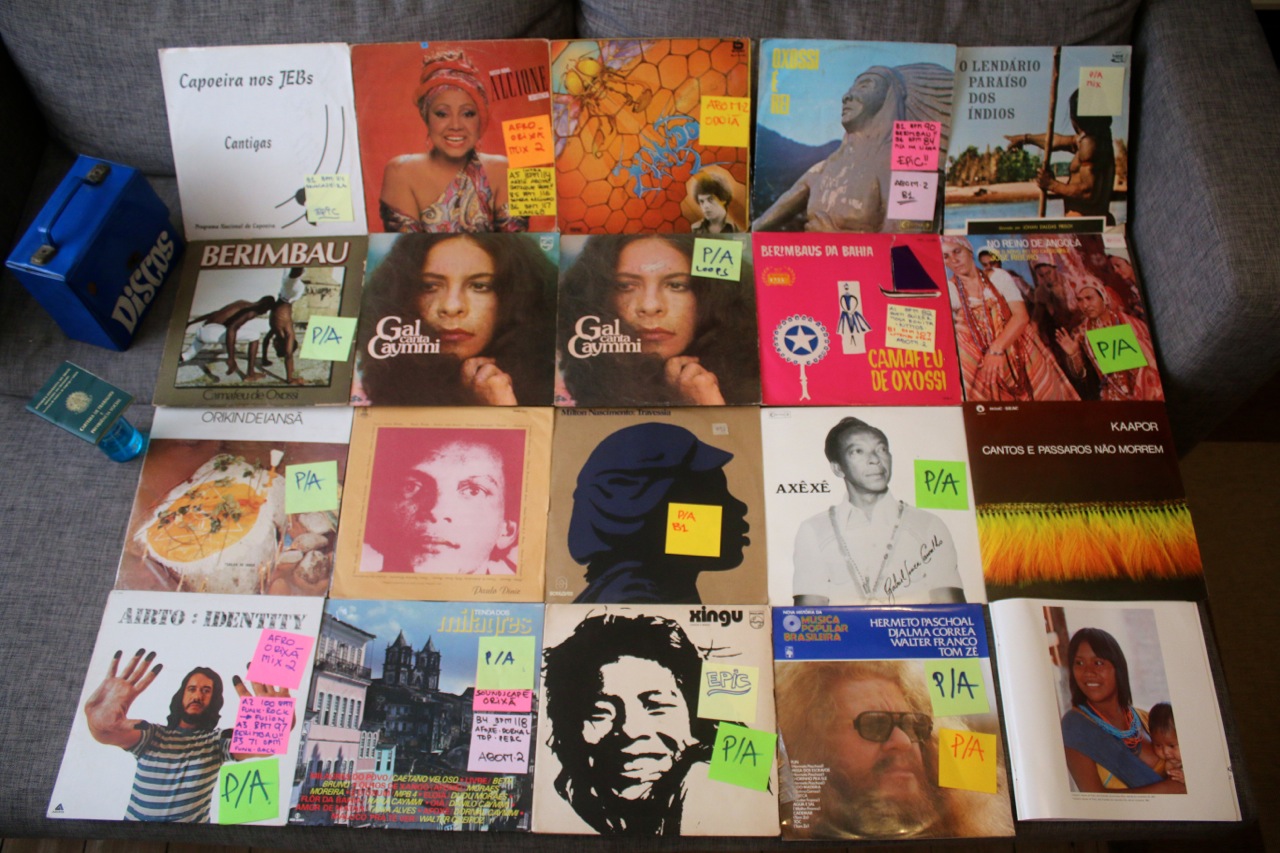
01. 00:00-01:05
Méné: Uirinã Pui – solo bamboo flute
Album: Kapoor – Cantos e Passarósnão morrem, Unicamp, 1988
I stumbled upon this amazon collection of flute play and native Indian chants while digging in a Rio store in the Botafogo neighborhood. The crate I was looking through was entitled “poetry and theater” and I was thrilled when I found this album – not being able to find anything online about it. I managed to negotiate a reasonable price and here it is – spreading it to the world. The recordings are based on field work by the University of Campinas in São Paulo state. It is clearly stamped “not for sale” and includes a personally signed information letter. So I guess we are talking 500-1000 units tops. The sound is great and the insight into the flute play even better. Enjoy this rare piece of native music from the heart, where the playing style is merely “singing into the flute”.
02. 01:05-03:46
Tom Zé: Toc
Album: Nova História da MPB:Hermeto Paschoal, Djalma Corrêa, Walter Franco, Tom Zé. AbrilCultural 10”, 1979. Org. released on “Estudando o Samba” (ScrutinizingSamba), 1976. Composer: Tom Zé.
Tom Zé is a living legend. And “Toc” is a driving and minimalistic track with a strong sense of rhythm where the staccato horns seems to take the role of the samba drums.The “Estudando o Samba” album marked his take on the samba – one of many Brazilian music styles but perhaps the most known one. And amazing and unique album, that is hard to find on vinyl today, the album was widely overlooked when it came out in 1976 and features a known bossa track – “A Felicidade”. It is written by Tom Jobim and immortalized in the 1959 movie “Black Orpheus” by Marcel Camus – a romantic and stunning portrait of Rio in the happy 1950’s. Before that Tom Zé had moved from Bahia to São Paulo and contributed to the (equally rare) Tropicália album that defined the“Brazil psych sound” from the 1960’s and onward. He is very respected and completely his own. Still active as an artist and collabs often with young artists. Unfortunately he cancelled his gig at Danish Roskilde Festival 2015 – I was looking so much forward to his show.
Full album link:https://www.youtube.com/
03. 03:46-06:00
Megaron tribe members: Canta das Almas (Song of the Souls)
Album: XinguCantos e Ritmos, Philips, 1972
Another rare album with some simply breathtaking chants. Although almost 1 million Brazilian natives and several untouched tribes exist in Brazil, the native tribes are under constant threats from money-making projects – farming, forestation and dam construction. The Megaron tribe is currently being threatened by dam building in Brazil – you can see more in the doc below.
Youtube:https://www.youtube.
04. 06:00-08:05
Milton Nascimento: Catavento (Weathercock)
Album: Travessia, Som Livre, 1978 – Org. released on Ritmos in 1967
I found this wordless track incredibly beautiful and a great contrast to the vocal driven Song of the Souls that proceeds it. It is from Milton’s debut album- reprinted in 1978 for the first time. The theme is purely Milton -flute and a catchy, light melody that buries itself deep in your memory and let you dream away. Milton is a master songwriter and was behind the “Clube da Esquina” album and the high pitched “Fé Cega Faca Amolada” track.
Full album link:https://www.youtube.com/
05. 08:05-08:25
Vatapáintro drums
Album: Gal Canta Caymmi, Philips, 1976
Percussion: Bira da Silva + Aladim
This is to this day one of my favorite albums and the arrangements are by two great heroes of the funky Brazilian jazz: João Donato and Antonio Adolfo. The sound on this album is absolutely amazing, crisp and loud.
It is a pure Afro-Brazilian percussion beat that I always play for the EVFB DJ gigs and I’ve wanted to put it in a mix for a while now. One day I might do an edit of this.
Full album link: https://www.youtube.com/
06. 08:25-11:05
Gabrielde Souza Carvalho: Tocororô (Spirit call)
Album: Axêxê,Caritas, 1994 reissue. Org. released on Caritas in 1975
The“Caritas” label, taking it’s name from a Vatican charity organization, was a label putting out candomblé and umbanda in the70s and 80s. In the mid-1990’s they re-issued a whole range of albums and I stumbled upon 8 of them an bought them on the spot. I suspect the Locomotiva record store in São Paulo to be sitting on apart of the re-issue stock. Umbanda and Condomblé is the “voodoo”of Brazil. It is the remnants of the spiritism of the African slaves worked into a semi-catholic context in a beautiful way incorporating music and spirit possession in an elegant way. Contrary to the prejudices often linked to “voodoo”, the rituals are quite structured and transparent – the religions are also registered and by law a national Brazilian heritage. The records are important because they document ritual music. The Caritas albums are very different – depending on the spirits and rituals the music is dedicated to. But most often chanting and accompanied by swirling drums. As a westerner you do not necessarily perceive that this is “religious” music – and I don’t really care because the quality and sound is unique.
The Axêxê album is centered around rituals for the death and departure of a “candomblé” believer. The rituals are different and treating the various aspects such as division of goods, devotion to Egum, spirit travel guidance and so on.
Link to candomblé background:https://en.
07. 11:05-12:45
Airto Moreira: Identity
Composer: Airto Moreira. Album: Identity, Arista, 1975
Airto is one of the great Brazilian percussionists and jazz drummers – his work is out there and very accessible. He moved to USA with Sergio Mendes and launched his career based on strong US jazz collaborations and as a percussionist with Weather Report. He is married to the vocalist Flora Purim – and their range of albums is impressive. in 2008-2010 Airto recorded and toured with the great contemporary jazz composer and piano player Jacob Anderskov. His range of sound and use of alternative instruments and voice is incredible and this track sits perfect with the mix-incorporating chanting, berimbau and simplistic percussion.
Enjoy an interview and demo in English here:https://www.youtube.com/
08. 12:45-15:30
Djalma Corrêa: Tudo Madeira (All Wood)
Album: Nova História da MPB:Hermeto Paschoal, Djalma Corrêa, Walter Franco, Tom Zé. AbrilCultural 10”, 1979. Org. released on the album “Biafro”, 1978.
One day in Rio de Janeiro I decided to go digging at the renowned Acarí Street Market far out in Rio’s suburbs. It was a rainy day, so there was hardly any vinyl to be found and I settled for the fact that I had been to another #urbex spot in this huge city. The Acarí Market was made famous in a “baile funk” track by MCBatata in 1990. On my way out I stumbled upon a pile of vinyl and negotiated a price on a good stack on compilation 10”’s by Abril. These mini albums were sold at newsstands in the 70s and 80s and are a great intro and source of information (there’s 12-16 pages with text and photo included) for Brazilian music. Luckily this particular 10” holds tracks by Hermeto, Tom Zé and Djalma together – great stuff!! Djalma’s solo work (he’s a famous and much used percussionist) was unknown to me. This is the closing track off the rare LP MPCB/Baiafro.
Full album link:https://www.youtube.com/
09. 15:30-19:20
Wando: Odoiá (Bless me, Iemanjá)
Album: Wando, Beverly, 1976. Composer: Chico De Assis, Wando
Simply a great minimalistic track by funky MPB favourite Wando – a devotion to Iemanjá – Goddess of the Sea.
10. 19:20-19:50
Caranguére tribe members: Canto do Tracajá (Song of the Tortoise)
Album: Xingu Cantos e Ritmos, Philips, 1972
Another energizing chant from the Xingú album. I promise to upload the full album before the end of 2015.
11. 19:50-22:45
Gabriel Souza Cavalho: Amurá Sebiná
Album: Axêxê, Caritas, RE 1994. Org. released on Caritas in 1975
Second death ritual song from the strong voice and choir of Gabriel.
12. 22:45-26:15
José Ribeiro,Vila Mavangu, Xô Apanevan: Exú
Album: No Reino de Angola,Caritas, 1994 (org. release 1987)
Full group name: José Ribeiro e Seus Filhos de Santo do Terreiro Egún Nita
Chant for Exú. The spirit (God) of movement, patience, communication, order and decline. Defender of cities and human behavior. Often Exú receives the first offering/devotion in a ceremony to make sure that the rest of schedule with the many different spirits will proceed as planned. Here’s a full hour of Exú music:https://www.youtube.com/
13. 26:15-28:15
Nelson: Atanara
Album: Kapoor – Cantos e Passarós não morrem, Unicamp,1988
Tribal members interpreting their ancestral songs. The title of the album is “Songs and Birds Never Die”. The Kapoor tribe has been recorded solo voice, solo flute or voice and maracas – the shaker also present on many other tracks in this mix. The Kapoor tribe hails from the Maranhão state in Northern Brazil.
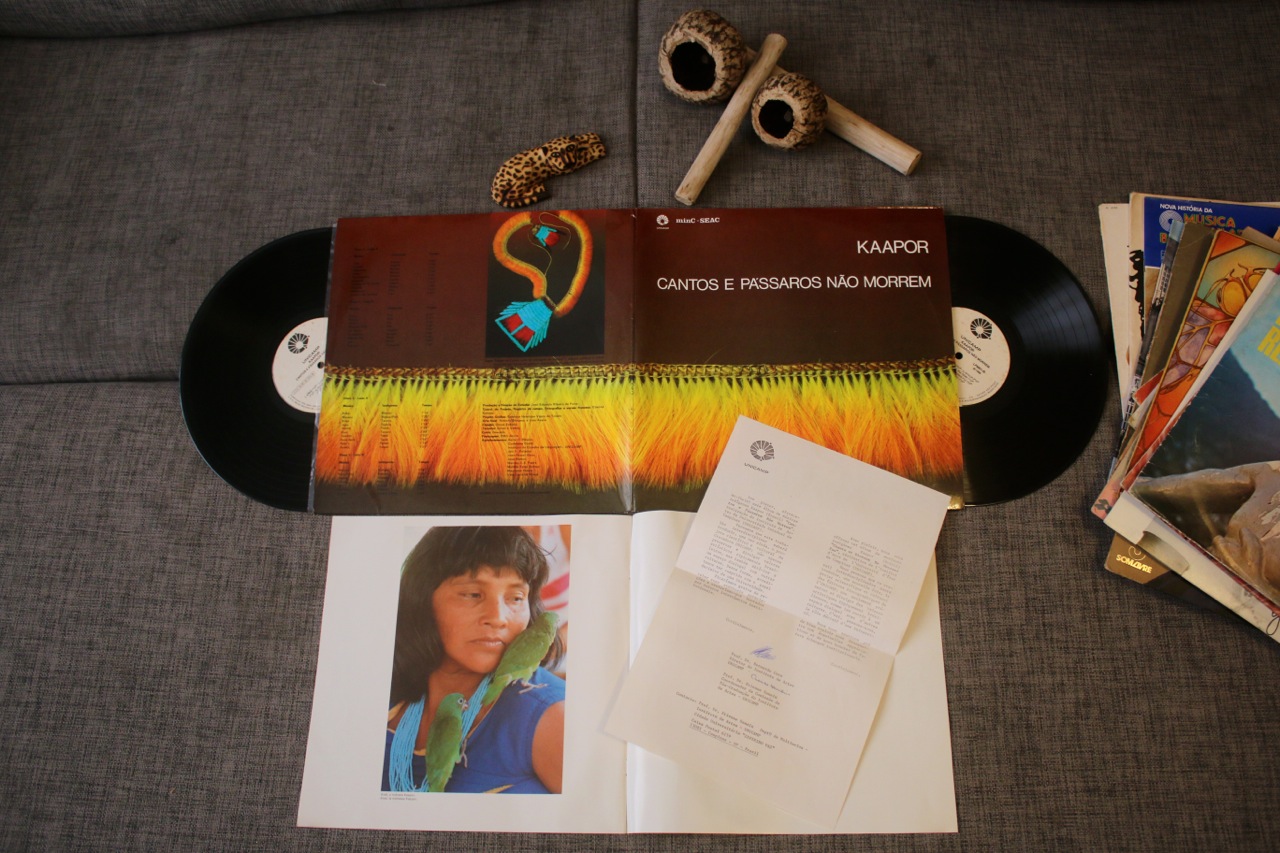
14. 28:15-29:35
Renaxi/Peri: Macaco (Monkey)
Album: Kapoor – Cantos e Passarós não morrem, Unicamp, 1988
Tribal members interpreting their ancestral songs.
15. 29:35-31:15
Capoeira group Pernambuco:Ensinamentos (Teachings)
Album: Capoeira nos JEBs: Cantigas, Ed.MEC, 1984
JEB is the annual Brazilian School Games that was initiated in the 1970s by the Ministry of Sports. Annual meetings with youth performing sports and cultural activities. This recording is from the 1984 edition and perhaps the fact that the games took place in Brasília – home of the Ministry – caused this recording to be made. The young vocalist from Recife in Pernambuca State talks about the culture of Capoeira and the importance of knowing history and respecting your master – something totally in line with the theme of this mixtape.
Enjoy some street capoeiristas from Recife in this link:https://www.youtube.com/
16. 31:15-34:10
PauloDiniz: Gósto Aborrecido (Feeling bored/sad)
Composer: P. Diniz +Odibar.
Album: …E agora José, Odeon, 1972
Diniz is also featured on the FCOB-2 mix and a favorite for EVFB DJ gigs. This is a melancholic funk song that treats the loss of a loved person. Diniz has produced a line of great and rare albums.
x
Perexi:Puku’y (small part of song on drum break)
Album: Kapoor – Cantose Passarós não morrem, Unicamp, 1988
I blended the voice with the breakbeat so it enhances the melancholy of the Paulo Diniz song.
17. 34:10-35:20
Santina Toledo: Pisa na Linha de Umbanda (Step on the Umbanda line)
Album: Oxossi é Rei, Caritas, 1985
Enter the ceremony, an opening song for an umbanda ceremony.
A decent background story that includes umbanda:https://www.youtube.
18. 35:20-38:05
Camafeude Oxossi: Babá Mixorô
Album: Berimbaus da Bahia, Continental,1967
A great capoeira/berimbau album by a cultural lighthouse and capoeira/berimbau master of Bahia, Camafeu de Oxossi. The album has liner notes by none other than Jorge Amado – one of Brazil’s greatest writers.
The album is not overpriced and can be bought on Discogs, so if you like this song, move quickly. In the 1970’s, Camafeu was a president of the spectacular Filhos de Ghandi Afoxécarnival group that ruled the Salvador carnival with up to 10.000 members playing Afro-Brazilian rhythms and singing in the Ioruba language.
The “how to make a berimbau” video:https://www.youtube.com/
19. 38:05-38:50
Alcione: Canção de Exílio (Exile Song)
Composer: Ubiratan Souza + SousaNeto
Album: Nosso Nome. Resistência, RCA, 1987
Alcione is a Brazilian pop icon and this is a great intro to a frenetic afoxé -the pre-dominant regional music in the state of Bahia. EVFB normally don’t deal in late 1980’s pop music, so this is a rare exception due to the realness of the drums.
Full track here: https://www.youtube.com/
20. 38:50-42:15
Arlindo Pires do Rio: Aguere de Iansã – Odurás (Prayers)
Album: Orikinde Iansã, Caritas, 1994 RE. Recorded at the Xangô Airá Aufungêge Temple
Iansã is the spirit (God) of wind, storm and passion (stormy relations).
21. 42:15-45:00
Dorival Caymmi: Afoxé
Composer: D. Caymmi. Arrangements, percussion DjalmaCorrêa
Album: Tenda dos Milagres, Som Livre, 1985
Dorival, an EVFB favourite, is the marble pillar of traditional Bahian music. This great percussion work, orchestrated by Djalma Corrêa, translates the spirit-invoking power of the ritual drums into a contemporary pop sound.
Link to Dorivals first album from 1954:https://www.youtube.com/
22. 45:00-45:30
Tayaquim: Tukano
Album: Kapoor – Cantos e Passarós não morrem, Unicamp,1988
23. 45:30-49:45
Hermeto Paschoal: Slaves Mass (Missa dos Escravos)
Arrangements and percussion – including livepigs – by Airto Moreira
Album: Slaves Mass, Warner Bros., 1977
Yes, Hermeto is this crazy albino percussionist even playing on animals. That was early 2001 and the first time I heard about Hermeto. His early works are hard to find in Brazilian pressings and he’s unique in the sense that he is from a small town in Alagoas State and started playing in strong instrumental groups Quarteto Novo and Brazilian Octopus and proceeded to be a Brazilian music darling even among great pop names. Brazilian musicians love Hermeto because he’s good and original – his nickname is “The Sorcerer” and I find his music multi-faceted and culturally deep and rich. He’s active and now lives in Curitiba.
Full album link: https://www.youtube.com/
24. 49:45-51:55
Salveo Povo da Bahia (Salute People of Bahia)
Album: Oxossi é Rei, Caritas, 1985.
A repetitive, driving song dedicated to the people of Bahia, the centre of African culture in Brazil.
25. 51:55-55:00
Elza Soares: Malandro (Scoundrel)
Album: Lição deVida, Tapecar, 1976. Composer: Jorge Aragão + Jotabê.
The breakthrough song of now famous composer and samba vocalist Jorge Aragão performed with great emotion by Elza Soares. Elza soon turning 80 years (I met her – wohoo), although suffering from great back pains, is still performing amazing liveshows and she has developed an amazing “overdrive” singingstyle.
Enjoy the rare live version with both of them together here:https://www.youtube.com/
